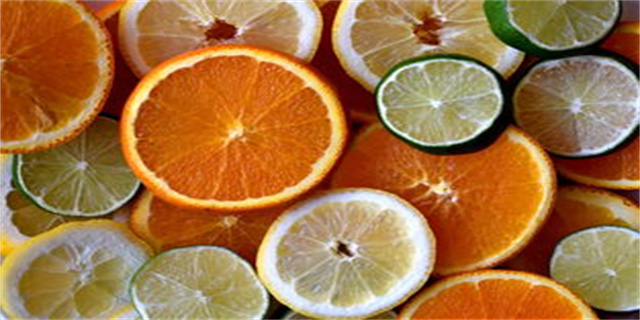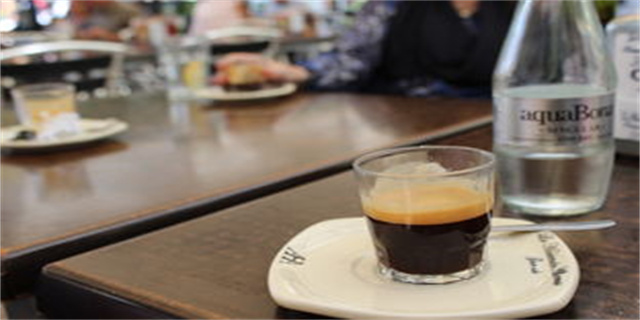首页 > 教育与人 正文
procession(Procedural March A Grand Display of Unity and Tradition)
冰糕就蒜 2024-09-10 08:44:05 教育与人442Procedural March: A Grand Display of Unity and Tradition
A procession is a magnificent spectacle that has been celebrated throughout history in countless cultures around the world. This ancient tradition brings people together, fosters a sense of unity, and showcases the rich cultural heritage of a community. From religious processions to parades commemorating special occasions, the art of procession is a fascinating display of human creativity and tradition.
The Historical Significance of Processions
Processions have been an integral part of human culture since ancient times. They hold immense historical and cultural significance, providing insights into the beliefs, values, and customs of a society. In ancient Egypt, processions were often held to honor important deities and pharaohs. The purpose was to demonstrate reverence and seek divine blessings. Similarly, the Greeks and Romans organized processions to celebrate festivals, victories, and important events.

In medieval Europe, religious processions became widespread. These solemn and grand parades were often held on special feast days to honor saints or commemorate significant religious occasions. Processions during the Middle Ages allowed people to demonstrate their faith, seek protection, and express their devotion. They served as important social and religious events that brought communities together, showcasing their collective faith and unity.
Celebratory Processions: A Feast for the Senses
Modern processions have evolved to include a diverse range of celebratory events. Parades held on national holidays, such as Independence Day or Bastille Day, demonstrate patriotism and evoke a sense of national identity. These processions are colorful affairs, with participants dressed in vibrant costumes, waving flags, and displaying cultural symbols. They often feature marching bands, dance troupes, and elaborate floats, creating a feast for the senses.

Another type of celebratory procession is the carnival parade, which is seen in various countries, most notably during the famous Brazilian Carnival. These lively and exuberant processions feature samba dancers, decorative costumes, and spectacular floats. The carnival parades are characterized by their energetic atmosphere, pulsating rhythms, and the joy of revelers. Such events attract both locals and tourists, fostering a sense of excitement and unity among participants and spectators.
The Symbolism and Impact of Processions
Processions are not merely grand spectacles. They carry deep symbolism, often representing important values and beliefs of a community. The act of marching together symbolizes unity and solidarity, as participants move forward as a group, transcending individual differences. Processions also provide a sense of belonging and reinforce cultural identity, thereby strengthening the social fabric of a community.
Furthermore, processions have a profound impact on both participants and spectators. For participants, the experience of marching in a procession fosters a sense of pride, belonging, and shared purpose. It allows individuals to actively engage with their community, connect with their heritage, and celebrate their culture. Spectators, on the other hand, witness the spectacle and feel a sense of awe and admiration. Processions have the power to evoke emotions, inspire reflection, and bring people closer together.
In conclusion, processions are not merely displays of grandeur; they are embodiments of unity, tradition, and cultural heritage. From ancient religious processions to modern celebratory parades, these events have played an important role in human history. They showcase the collective spirit of a community, foster a sense of belonging, and highlight the diverse traditions and values that make societies rich and vibrant. Processions truly embody the beauty of human creativity, unity, and the celebration of life.
猜你喜欢
- 2024-09-10 苏州汽车客运总站(苏州汽车客运总站的便捷与舒适)
- 2024-09-10 procession(Procedural March A Grand Display of Unity and Tradition)
- 2024-09-10 七猫免费阅读小说官方下载(七猫小说阅读APP官方下载)
- 2024-09-10 巨人的花园ppt(巨人之境——探秘巨人的花园)
- 2024-09-10 九寨沟旅游报价(九寨荒野漫步)
- 2024-09-09 什么东西最容易满足(什么东西最容易满足人们的需求)
- 2024-09-09 复印机租赁合同(复印机租赁合约范本)
- 2024-09-09 太荒吞天诀柳无邪完整版免费阅读(大荒之中,如何修炼太荒吞天诀?)
- 2024-09-09 速腾2020款报价及图片(2020款速腾报价及图片)
- 2024-09-09 开学安全第一课(开学安全攻略)
- 2024-09-09 段宏章有没有死(命运与自由——人类是否注定不能逃离死亡)
- 2024-09-09 中国人保车险电话(中国人保车险电话,安心无忧的保障)
- 2024-09-10苏州汽车客运总站(苏州汽车客运总站的便捷与舒适)
- 2024-09-10procession(Procedural March A Grand Display of Unity and Tradition)
- 2024-09-10七猫免费阅读小说官方下载(七猫小说阅读APP官方下载)
- 2024-09-10巨人的花园ppt(巨人之境——探秘巨人的花园)
- 2024-09-10九寨沟旅游报价(九寨荒野漫步)
- 2024-09-09什么东西最容易满足(什么东西最容易满足人们的需求)
- 2024-09-09复印机租赁合同(复印机租赁合约范本)
- 2024-09-09太荒吞天诀柳无邪完整版免费阅读(大荒之中,如何修炼太荒吞天诀?)
- 2023-02-24大盘鸡的家常做法(家常版大盘鸡,方法简单,好吃接地气,吃完汤汁拌面,真过瘾)
- 2023-02-24大连在哪个省(东北三省最发达的城市——大连)
- 2023-02-24大麦茶怎么泡(大麦茶怎么泡?)
- 2023-02-24河蚌怎么处理(为什么在农村很少人吃河蚌?)
- 2023-02-24牛肉丸子的做法(自制纯手工牛肉丸,劲道弹性足,鲜香有嚼劲)
- 2023-02-24浏览器兼容性(浏览器兼容模式怎么设置?)
- 2023-02-24zuoche(领导开车的礼仪)
- 2023-02-24获取ip地址(如何查看电脑ip地址?)
- 2024-09-09夏晚枝傅霁清小说(夜晚的烟花)
- 2024-09-08伊利股份有限公司(伊利实现了数字化转型,创造了新的增长机遇)
- 2024-09-08辅导员述职报告(辅导员工作情况报告)
- 2024-09-08放弃我抓紧我原著小说(抛弃我尽力攥紧我的原著小说)
- 2024-09-08雷锋的名人名言(雷锋教会我们如何做一个好人)
- 2024-09-07人民币兑美元走势(人民币兑美元汇率走势分析)
- 2024-09-07海尔空调服务电话(海尔空调售后服务电话)
- 2024-09-07umd是什么意思(Understanding UMD A Comprehensive Guide)
- 猜你喜欢
-
- 苏州汽车客运总站(苏州汽车客运总站的便捷与舒适)
- procession(Procedural March A Grand Display of Unity and Tradition)
- 七猫免费阅读小说官方下载(七猫小说阅读APP官方下载)
- 巨人的花园ppt(巨人之境——探秘巨人的花园)
- 九寨沟旅游报价(九寨荒野漫步)
- 什么东西最容易满足(什么东西最容易满足人们的需求)
- 复印机租赁合同(复印机租赁合约范本)
- 太荒吞天诀柳无邪完整版免费阅读(大荒之中,如何修炼太荒吞天诀?)
- 速腾2020款报价及图片(2020款速腾报价及图片)
- 开学安全第一课(开学安全攻略)
- 段宏章有没有死(命运与自由——人类是否注定不能逃离死亡)
- 中国人保车险电话(中国人保车险电话,安心无忧的保障)
- 夏晚枝傅霁清小说(夜晚的烟花)
- 时尚cosmo(时尚与魅力:探寻Cosmo风尚)
- 分镜头脚本格式(分镜头脚本格式详解)
- 湖州晚报电子版(湖州晚报电子版:湖州市民关注的话题)
- 黄鹤高楼已捶碎(诸葛亮建议新修黄鹤高楼)
- 手机steam官网(手机游戏平台Steam官网:为您带来终极游戏体验)
- 中建三局二公司(中建三局二公司是怎样一家建筑公司?)
- 苹果14上市时间已定(苹果14已确定发布日期,全球消费者即将迎来新一代的科技体验)
- 河北联通网上营业厅(河北联通网上自助服务平台)
- 开启黑科技时代(开创黑科技时代,让未来成为现实)
- 哈佛h6自动挡(哈佛h6自动挡的驾驶体验)
- 派多格宠物店宠物(派多格宠物店的可爱宠物们)
- 广发期货手续费(广发期货手续费说明)
- 伊利股份有限公司(伊利实现了数字化转型,创造了新的增长机遇)
- 神之墓地26d(神明沉睡的圣地 26d)
- 昆明到西双版纳高铁(旅行从昆明到西双版纳的高铁之旅)
- 金庸群侠传单机版(金庸群侠传单机版:重温经典武侠世界)
- 路由器密码忘记了怎么重新设置(路由器密码忘记了怎么重新设置)
